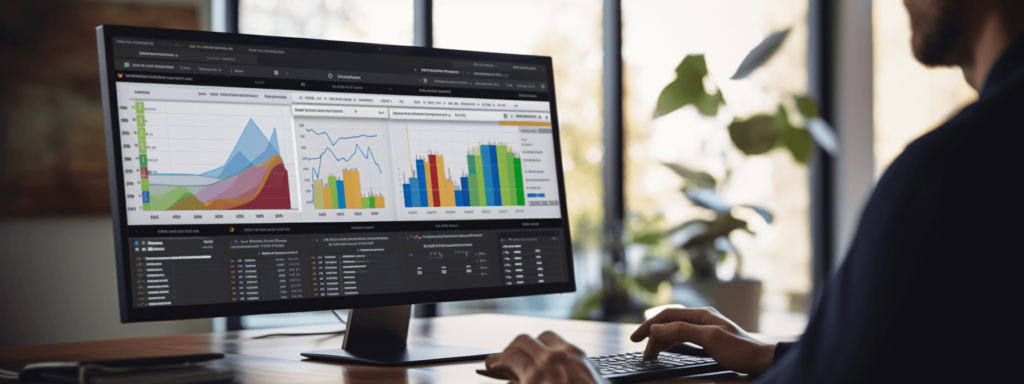What Is Dashboard Reporting and How Do You Implement It?

In the age of information, businesses recognize that data-driven decision-making is key. However, without effective ways to view, analyze, and digest large volumes of data, you might miss out on pivotal insights that could help drive your business to success. One such tool to harness your data effectively is dashboard reporting. Keep reading to learn more about what is dashboard reporting
Understanding Dashboard Reporting
Envision driving a car without a dashboard. You won’t know your speed, fuel level, or the engine’s state, leading to inefficient driving. Similarly, businesses need a dashboard, a data visualization tool that consolidates and displays the metrics and key performance indicators (KPIs) that define a business’s health.
Dashboard reporting turns raw data into valuable insights, rendering them visually appealing and user-friendly. Interactive dashboards can delve into more detailed data, allowing in-depth data analysis and decision-making.
However, to fully harness the potential of dashboard reporting, you need to comprehend its key components.
Key Components of Dashboard Reporting
Dashboard reporting consists of four components: data sources, visualization tools, interactivity, and real-time updates.
Data sources ensure the dashboard provides the right context and makes data analysis meaningful. They include customer relationship management (CRM), enterprise resource planning (ERP), marketing automation systems, and databases.
The visualization tools transform vast datasets into understandable visuals. They could be bar graphs, charts, or heat maps that simplistically represent complex data.
Interactive features of dashboards allow users to change parameters and filters, enhancing customized data analysis.
Lastly, real-time updates are vital, ensuring that the information on the dashboard is up-to-date, enabling prompt decision-making.
The Importance and Benefits of Dashboard Reporting
Understanding data is central to businesses today. Dashboard reporting allows companies to sort, organize, and visualize vital data in real time.
With dashboard reporting, businesses can monitor performance continually and promptly attend to areas that fall short.
Dashboard reporting promotes transparency among teams, as everyone views the same information. It minimizes the scope for misinterpretation, leading to uniformity in action and decision-making.
Moreover, a visual databank fosters informed strategic planning, enabling businesses to spot trends, track progress, and foresee potential challenges.
Read more The Best SMM: 9 Tips to Stand Out with a Winning Strategy
Guiding Principles for Implementing Dashboard Reporting
Implementing dashboard reporting necessitates identifying the KPIs that matter the most to your business.
The dashboard should cater to the needs of its users. Therefore, it’s crucial to involve all end-users, including executives, managers, and customers, in its design process.
Accuracy of data is paramount. Your dashboard pulls data from various sources, hence, ensuring the data’s quality is essential for reliable decision-making.
Remember, a cluttered dashboard can confuse users. Keeping it simple and specific should be the guiding principle when designing your dashboard.
Best Practices for Maximizing Dashboard Reporting Efficiency

To maximize the effectiveness of your dashboard reporting, it’s essential to keep them aligned with your business goals. They should display relevant KPIs that adhere to these goals.
Dashboard reporting must be user-friendly and designed with an intuitive interface. Users should be able to navigate and interpret the dashboard with relative ease.
Adopt a flexible approach. Your business needs to evolve; ensure your dashboard reporting can accommodate and evolve with these changes.
Finally, train your staff on how to use and interpret dashboard reports. This will empower them to make data-driven decisions effectively and independently.
Data forms the backbone of any business. Dashboard reporting serves as the nervous system, transmitting important data and insights to all essential parts of your business. By understanding, designing, and efficiently implementing dashboard reporting, you harness your data’s power, magnifying your business’s efficacy and success.




